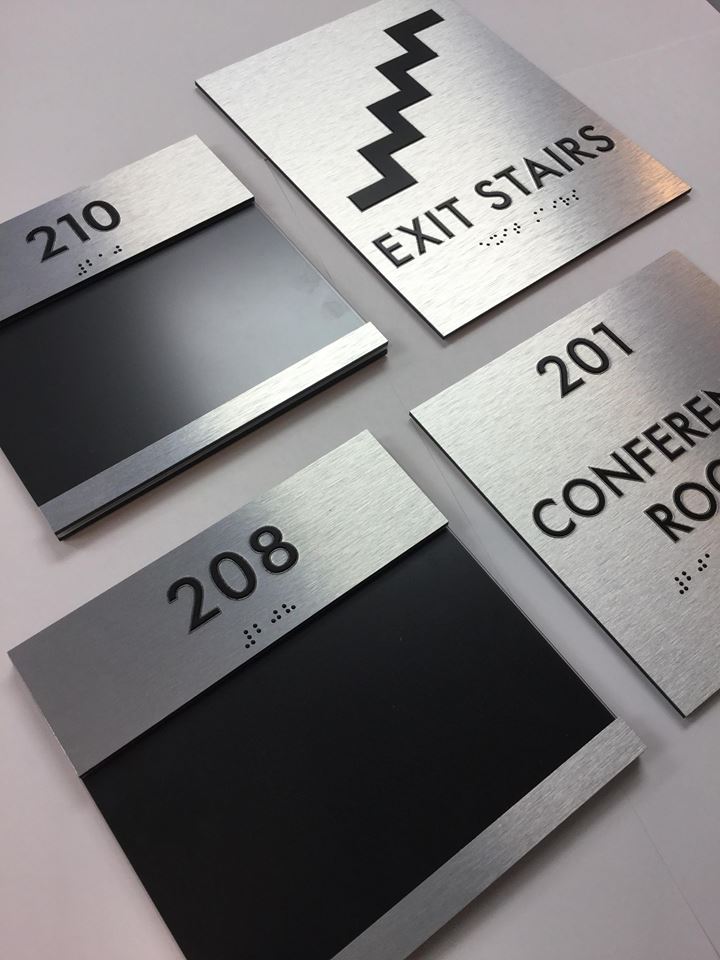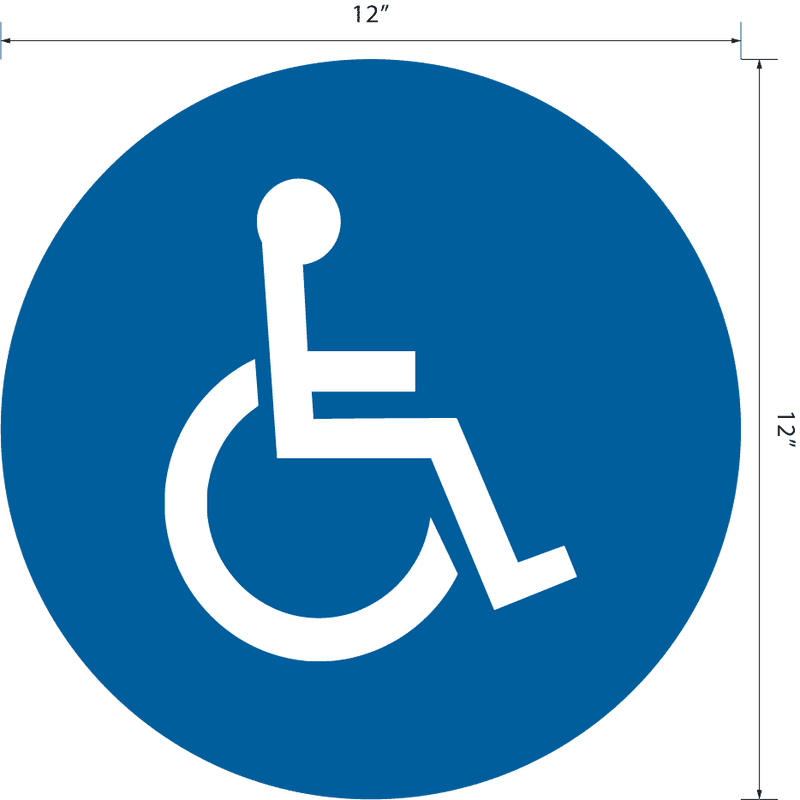The Role of ADA Signs in Complying with Access Specifications
The Role of ADA Signs in Complying with Access Specifications
Blog Article
Checking Out the Secret Functions of ADA Indications for Improved Accessibility
In the world of availability, ADA indicators offer as quiet yet effective allies, guaranteeing that areas are comprehensive and accessible for people with impairments. By integrating Braille and responsive elements, these indications break barriers for the visually impaired, while high-contrast shade schemes and legible fonts cater to varied visual needs.
Relevance of ADA Compliance
Making sure compliance with the Americans with Disabilities Act (ADA) is essential for cultivating inclusivity and equal access in public areas and workplaces. The ADA, established in 1990, mandates that all public centers, employers, and transportation services fit people with handicaps, guaranteeing they take pleasure in the very same civil liberties and opportunities as others. Conformity with ADA criteria not only meets legal obligations yet also improves an organization's track record by showing its dedication to diversity and inclusivity.
Among the vital facets of ADA conformity is the execution of obtainable signage. ADA signs are designed to make certain that people with impairments can quickly navigate through rooms and structures. These indications have to abide by details guidelines concerning dimension, font, color contrast, and positioning to guarantee visibility and readability for all. Effectively executed ADA signage helps get rid of obstacles that individuals with disabilities often come across, consequently advertising their independence and self-confidence (ADA Signs).
Furthermore, adhering to ADA guidelines can minimize the danger of prospective penalties and legal repercussions. Organizations that fall short to adhere to ADA guidelines may encounter lawsuits or charges, which can be both monetarily burdensome and destructive to their public picture. Thus, ADA compliance is integral to cultivating a fair atmosphere for everybody.
Braille and Tactile Aspects
The consolidation of Braille and responsive aspects right into ADA signs personifies the concepts of availability and inclusivity. These attributes are essential for people that are aesthetically damaged or blind, enabling them to browse public rooms with greater self-reliance and confidence. Braille, a responsive writing system, is important in providing composed details in a format that can be conveniently perceived via touch. It is normally positioned beneath the equivalent text on signage to make certain that individuals can access the details without visual help.
Tactile elements prolong beyond Braille and consist of increased symbols and personalities. These components are designed to be discernible by touch, permitting individuals to determine room numbers, bathrooms, exits, and other important locations. The ADA establishes certain guidelines concerning the dimension, spacing, and placement of these tactile aspects to enhance readability and make certain uniformity throughout different environments.

High-Contrast Color Design
High-contrast color systems play a crucial function in boosting the exposure and readability of ADA signs for individuals with aesthetic problems. These systems are necessary as they maximize the distinction in light reflectance between message and background, guaranteeing that indications are easily discernible, even from a range. The Americans with Disabilities Act (ADA) mandates making use of specific shade contrasts to suit those with limited vision, making it a crucial aspect of compliance.
The efficacy of high-contrast colors depends on their ability to attract attention in numerous lighting conditions, consisting of dimly lit atmospheres and locations with glare. Commonly, dark text on a light background or light message on a dark history is employed to attain optimal comparison. As an example, black message on a white or yellow history supplies a plain visual distinction that helps in quick recognition and comprehension.

Legible Fonts and Text Dimension
When thinking about the style of ADA signage, the choice of understandable font styles and appropriate text size can not be overstated. These aspects are vital for ensuring that indications come to individuals with visual disabilities. The Americans with Disabilities Act (ADA) mandates that fonts must be not italic and sans-serif, oblique, manuscript, very decorative, or of unusual kind. These demands assist ensure that the message is easily legible from a range which the personalities are appreciable to diverse target markets.
The dimension of the message also plays a crucial function in accessibility. According to ADA standards, the minimum message height need to be 5/8 inch, and it needs to raise proportionally with seeing range. This is especially essential in public spaces where signage demands to be read promptly and properly. Consistency in text dimension adds to a natural visual experience, aiding people in navigating environments successfully.
Furthermore, spacing between letters and lines is essential to legibility. Adequate spacing prevents characters from showing up crowded, boosting readability. By sticking to these criteria, designers can dramatically enhance accessibility, ensuring that signs serves its designated objective for all individuals, despite their aesthetic capacities.
Effective Placement Methods
Strategic positioning of ADA signs is vital for optimizing access and making certain compliance with legal requirements. Correctly located indicators direct people with specials needs effectively, promoting navigation in public areas. Trick factors to consider include distance, presence, and elevation. ADA guidelines specify that indications need to be placed at a height between 48 to 60 inches from the ground to ensure they are visite site within the line of view for both standing and seated individuals. This basic height array is critical for inclusivity, making it possible for wheelchair customers and people of varying heights to accessibility info easily.
Furthermore, indicators have to be positioned adjacent to the lock side of doors to enable very easy recognition before entry. This placement assists individuals situate rooms and spaces without obstruction. In situations where there is no door, signs need to be positioned on the local nearby wall surface. Consistency in indicator positioning throughout a center enhances predictability, reducing complication and boosting overall user experience.

Verdict
ADA indications play an essential function in promoting ease of access by integrating attributes that deal with the requirements of people with impairments. Integrating Braille and responsive aspects ensures important info is easily accessible to the aesthetically damaged, while high-contrast color design and legible sans-serif fonts enhance visibility across different illumination problems. Effective placement strategies, such as proper placing heights and strategic areas, further help with navigation. These components this content jointly cultivate a comprehensive environment, emphasizing the value of ADA conformity in ensuring equivalent access for all.
In the realm of accessibility, ADA indicators serve as quiet yet effective allies, making sure that areas are inclusive and accessible for individuals with handicaps. The ADA, established in 1990, mandates that all public facilities, employers, and transportation services suit people with impairments, ensuring they appreciate the very same civil liberties and chances as others. ADA Signs. ADA indicators are created to make certain that individuals with specials needs can quickly navigate through spaces and structures. ADA standards stipulate that indicators need to be placed at an elevation in between 48 to 60 inches from the ground to ensure they are within the line of sight visit homepage for both standing and seated individuals.ADA signs play a crucial duty in advertising availability by incorporating functions that resolve the requirements of people with impairments
Report this page